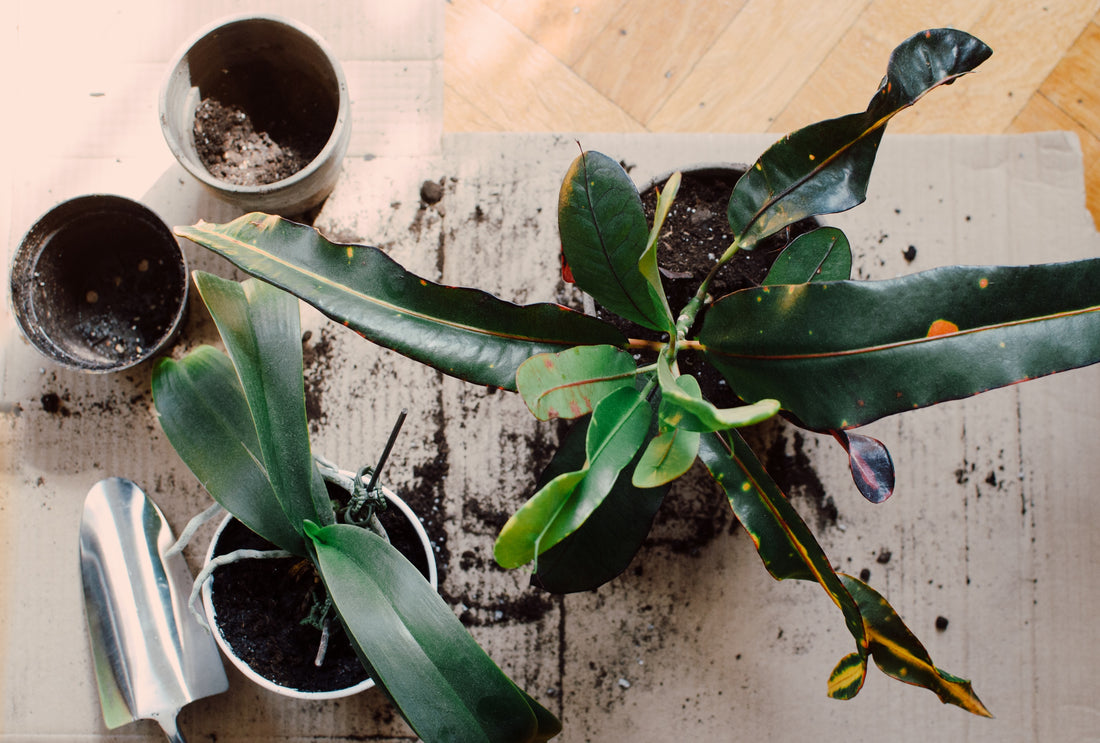If you like to shop for plants online, you've probably added several to your list of favourites. However, the happiness you get from your plants depends on the conditions you can offer them.
We spoke with horticulturist Cécile aka Ortigreen (her Facebook group is called Help my plant and her Instagram account, Ortigreen) from Paris to offer you some horticultural tips from pros so that you can take good care of your plants in winter. In this article, the first article in the series Horticultural tips from pros, we tell you everything you need to know to choose the right plants.
Our expert
Cécile is a horticulturalist from Paris, France. After working as a stewardess and executive assistant, she chose to pursue a career that would allow her to have her hands in the soil. During the last few years, she has therefore completed a horticulture study program and has then worked with families in the field for 4 generations (they are also moderators on the Help my plant group). The one who prefers monsteras deliciosa among all plants answers our questions today on the best ways to choose a houseplant.
Buying a plant that will flourish at home
What is the number one mistake you notice among people who
have plants at home?
A real lack of drainage, and therefore poor
watering, or even over-watering since drainage is not done! With the madness of urban jungle interiors, most plants that "go wrong" are sales without real advice from the salespeople. Without a minimum of knowledge, it is difficult to make a tropical plant evolve when it is out of its element. For example, plants are bought in spring or December and delivered to itself. Not enough attention is paid to the pre-existing elements when they are purchased. It is easy to change plants, but less easy to change exhibitions or houses.

In your opinion, what are the easiest plant varieties to maintain?
Rather than varieties, we should be talking about two families with opposing emerging needs: araceae and cacti and succulents. The former adapt rather well to interiors and the cacti can be left for weeks without special care under conditions of excellent light. They can flourish very well in a person who is very often absent from work or extra-professional activities. The scindapsus or pothos are also not very demanding and rather robust indoors.
And what are the plant varieties that are suitable for experts?
The Aglaonema Pictum Tricolor is a real difficulty for me, I received it in cuttings 8 months ago, and it only takes out its 2nd leaf...I put too much pressure on it I think, and it plays a lot on the plant. It is a "slow" growing plant and you have to learn patience with it! I made her test all the substrates I think, there she is still in my special "arrival" greenhouse. Some anthuriums also require very high humidity and a special substrate. And all the plants requiring a rest period based on an important delta between day and night temperatures (orchids, Peruvian cactii, etc...).

How to choose a plant that will be able to adapt to the conditions of
Our home?
Light, heat and hygrometry are the 3 factors to take into account
before buying.
An explanatory card is often sold with the plant, but it is not precise enough. Except for cacti, houseplants can't stand direct sunlight all day long. Instead, they need the sun either in the morning or in the afternoon, but by no means all day long. You can therefore avoid buying a houseplant if you are facing south or if you fall back on cacti. Also, the ambient air must be humid. It is naturally humid in the summer and even in the spring, but beware of winters, when the heating dries out the air and tropical plants suffer. This is also the reason why it is difficult to control your plants in winter. I advise you to group your plants together in order to increase the hygrometric rate of the room, to invest in the purchase of a warm mist humidifier as well as horticultural lamps or, at a lower cost, lamps recreating daylight. In winter, the days are shorter and therefore the plants receive less light, which is essential for photosynthesis.
Houseplants can be classified into 3 categories.
Plants of "full sun"
These are plants from semi-arid and desert regions. Fatty plants and cacti and some trees from Mediterranean regions are classified in this category.
Light" plants Most houseplants can be found in this class. They need a lot of light, but cannot stand the sun all day long. You should therefore avoid placing these plants behind a bay window if you are facing south, as this could burn your foliage. On the other hand, there is no problem if it only receives the morning or afternoon sun. Among these plants are the philodendron-type spiders.
Shade" plants
Even if they can tolerate low light intensity, it does not mean
that they do not like light! By this I mean that a room without windows will not suit them! These are plants known as "undergrowth" plants. In their natural environment, they like to hide under others! As if they needed tranquility, they like being in corners away from windows. Among these plants are the marantaceae of the calathea type.

What are your tips for buying healthy plants?
The general condition of the plant! If it is upright, its rigid leaves and the colour of the leaves (a sign of deficiency or pest attack) say a lot about a plant's state of health. You should also make sure that the leaves are not "stung" and look at the back and edges of the leaves (sometimes tiny webs are visible and are a sign of the presence of mites). In addition, look at the interstices at the nodes, because mealybugs love to live there! Don't hesitate to ask questions, even if it means asking about the arrival date of the plant in the shop! You will also be able to see, if the soil is very dry, that it hasn't had much attention since its arrival, or that it has been there for a very long time and that it may be weaker and therefore vulnerable to attacks of all kinds (sawdust / thrips / mites). Personally, I have a zoom on my phone, so I put the plant under a magnifying glass!
In the case of a purchase in a foreign tropical country; it is strongly advised to ask for a phytosanitary certificate! This will certainly cost more, but you will be sure that your plant will not contain any viruses or parasites when it arrives at your home (this is also a condition for importing plants into Canada).
What should we do with the plants we bring home?
I usually let it acclimatize for at least a week by itself in a so-called "quarantine" area. I water it if it wasn't, but I don't move it from its original substrate. Then I usually change the original substrate. If the plant had just been potted in a very good potting soil in the shop, there is no need to change it. I make my own homemade recipes that my araceae love!

What books do you recommend for those who want to learn more about plants?
- The scandalous sex life of plants Mickael Allaby, Éditions Hoebecke
- Homemade slurries, potions and whitewash, Éditions Larousse
- Custom Cuttings, Éditions Marabout
- Botanist of Marc Jeanson
Which websites do you recommend?
I recommend the Verde alcove videos on Instagram and Facebook. She's great!
And also That_one _plant_guy on Instagram!
Thanks to Cécile Ortigreen (horticulturist in Paris) and Mickael Landau (landscaper in Paris) for sharing their knowledge.
---
Shop your plants according to our different categories here.


1 comment
Très beau texte, bien documenté et très éclairant pour bien choisir et prendre bien soin de ses plantes! Les suggestions de lectures sont très tentantes! Et quelles belles photos, j’adore!